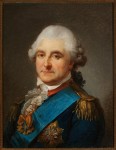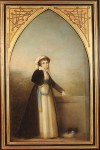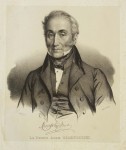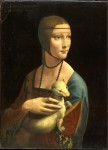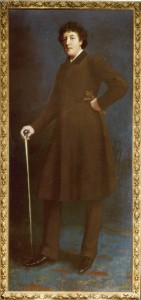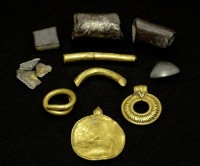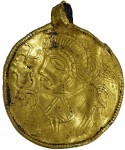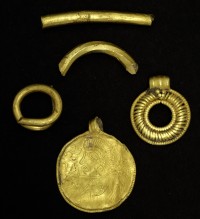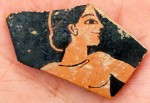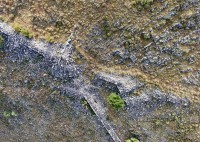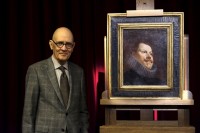 A previously unpublished painting by Diego Velázques has been donated to the American Friends of the Prado Museum by art historian William B. Jordan and is now going on display at the Prado Museum in Madrid as a renewable long-term deposit. Jordan bought it in 1988 but only recently submitted it to the Prado experts for extensive testing and authentication.
A previously unpublished painting by Diego Velázques has been donated to the American Friends of the Prado Museum by art historian William B. Jordan and is now going on display at the Prado Museum in Madrid as a renewable long-term deposit. Jordan bought it in 1988 but only recently submitted it to the Prado experts for extensive testing and authentication.
Mr. Jordan acquired the painting in London at an auction of Phillips, where it was mistakenly labeled, both in terms of its subject matter and author. While the work ostensibly represented Don Rodrigo Calderón, “it was very obvious to me that it was” King Philip III, Mr. Jordan said. The work was also wrongly auctioned as painted by somebody from the circle of Justus Sustermans, a Flemish painter. Mr. Jordan also initially made a wrong assumption that the portrait was a fragment of a larger painting rather than a preparatory oil sketch.
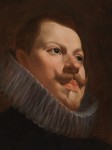 The portrait is a preparatory painting for The Expulsion of the Moriscos, a large-scale historical work Velázquez made for a contest in 1627. According to Jusepe Martínez, a painter and friend of Velázquez’s, when some artists dismissed Velázquez as someone who can “do nothing but paint heads,” King Philip IV proposed a pictorial competition to settle the matter. His four court painters, Carducho, Caxesi, Nardi, and Velázquez, would create a monumental work on a historical theme. As a subject Philip IV chose the Expulsion of the Moriscos.
The portrait is a preparatory painting for The Expulsion of the Moriscos, a large-scale historical work Velázquez made for a contest in 1627. According to Jusepe Martínez, a painter and friend of Velázquez’s, when some artists dismissed Velázquez as someone who can “do nothing but paint heads,” King Philip IV proposed a pictorial competition to settle the matter. His four court painters, Carducho, Caxesi, Nardi, and Velázquez, would create a monumental work on a historical theme. As a subject Philip IV chose the Expulsion of the Moriscos.
On April 9th, 1609, King Philip III decreed the expulsion of the Moriscos, the descendants of Muslims who had been forced to convert to Christianity in the early 16th century, from Spain. Five years and one entirely predictable financial collapse later, hundreds of thousands of Moriscos had been expelled, mainly to North Africa. The Church and nobility saw it as a heroic act of Christian kingship, and it became a popular subject for painters.
 The theme did give Velázquez the opportunity to paint some heads, most notably that of Philip III, but unlike the portraiture that he was already famous for, this portrait was of someone he had never seen who was dressed in period clothing. The sea-side setting was also unfamiliar to the Madrid-based painter. He overcame all obstacles of theme, setting and format. The judges, Dominican friar Maino of Toledo and Italian painter Giovanni Battista Crescenzi, ruled that Velázquez was the winner. His winning painting was found a place on the walls of the Royal Alcázar palace in Madrid.
The theme did give Velázquez the opportunity to paint some heads, most notably that of Philip III, but unlike the portraiture that he was already famous for, this portrait was of someone he had never seen who was dressed in period clothing. The sea-side setting was also unfamiliar to the Madrid-based painter. He overcame all obstacles of theme, setting and format. The judges, Dominican friar Maino of Toledo and Italian painter Giovanni Battista Crescenzi, ruled that Velázquez was the winner. His winning painting was found a place on the walls of the Royal Alcázar palace in Madrid.
References to it appear in the palace Inventory of 1686, in the will of Charles II (1701), and in the third volume of Antonio Palomino’s compendium of Spanish artists in 1724. There is no extant record that mentions the work. It was destroyed in the fire that reduced the palace to rubble in 1734. Velázquez’s groundbreaking and endlessly influential Las Meninas came close to sharing The Expulsion of the Moriscos‘ fate. It was saved only by being taken out of its frame and thrown out the window.
In the century between its creation and destruction, no copies of it were made that have survived. There aren’t even any sketches or drawings known. All we know about the painting is from written descriptions. The preparatory painting does seem to fit with the descriptions, which is one of the reasons Jordan became convinced of its identity and attribution. There are other reasons as well.
Philip III appears to be aged around 40 in the painting, his age in 1609 when the moriscos were expelled from Spain.
Stylistically, the work necessarily dates from later than 1609. It must have been produced between 1623, when Velázquez arrived at court and introduced a new style of royal portrait that corresponds to that of this work, and 1631, when he returned from Italy and adopted a notably different portrait style.
The fact that Philip III is in profile and looking up indicates that this is not a portrait (in which the sitter normally looks straight ahead) but an image to be included in a narrative scene.
The fact that the work’s characteristics are not comparable to the styles of the other portraitists working at the court in the 1620s, such as Van der Hamen, Maíno, Diricksen, etc.
A study of written descriptions of The Expulsion of the Moriscos suggest that the portrait of Philip III in that scene had a similar expression to this one and was looking in the same direction.
 The Prado’s technical study of the work confirmed that the canvas, preparation and construction are all comparable to the those used by Velázquez in paintings from around 1627 and before his first trip to Italy in 1629. The modelling of the faces and is also similar in method and style to royal portraits Velázquez made in the late 1620s.
The Prado’s technical study of the work confirmed that the canvas, preparation and construction are all comparable to the those used by Velázquez in paintings from around 1627 and before his first trip to Italy in 1629. The modelling of the faces and is also similar in method and style to royal portraits Velázquez made in the late 1620s.
The addition of this work to the Museum’s collections as a long-term deposit will contribute to completing its representation of Velázquez as a royal portraitist, given that it is a work of outstanding quality and previously unpublished in the scholarly literature. As such, it will help to cast light on one of the key works of the artist’s early period at court.
